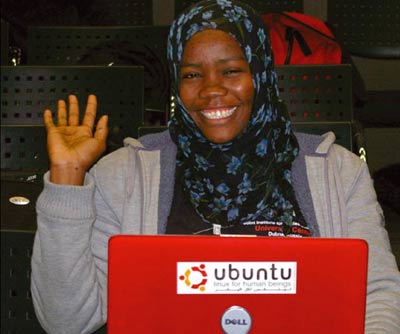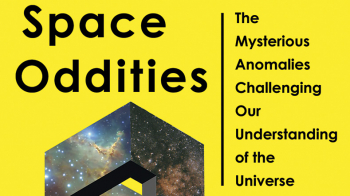Students discover fundamental physics and its applications in Stellenbosch.

On 1 August, 65 students arrived at the National Institute for Theoretical Physics (NITheP) in Stellenbosch, South Africa. They were there to participate in the first African School on Fundamental Physics and its Applications (ASP2010). More than 50 participants had travelled from 17 African countries, fully supported financially to attend the intensive, three-week school. Others, from Canada, Germany, India, Switzerland and the US, helped to create a scientific melting pot of cultural diversity that fused harmoniously throughout the duration of the school.
ASP2010 was planned as the first in a series of schools to be held every two years in a different African country. It was sponsored by an unprecedentedly large number of international physics institutes and organizations, indicating the widespread interest that exists in making high-energy physics and its benefits the basis of a truly global partnership by reaching out to a continent where increased participation needs to be developed. The school covered a range of topics: particle physics, particle detectors, cosmology and accelerator technologies, as well as some of the applications, such as computing, medical physics, light sources and magnetic confinement fusion.
The courses were taught by physicists from around the globe, but included a significant number from South Africa, which has relatively well established research and training programmes in these areas of physics. The picture throughout the rest of Africa, in particular the sub-Saharan region, is rather different. As an example, consider the facts about African researchers at CERN. Currently, only 51 researchers of the 10,000 researchers registered at CERN have African nationalities, and only 18 of them currently work for African institutes. As CERN’s director-general, Rolf Heuer, points out: “When I show people the map of where CERN’s users come from, it’s gratifying to see it spanning the world, and in particular to see southern-hemisphere countries starting to join the global particle-physics family. Africa, however, remains notable more for the number of countries that are not involved than for those that are.” John Ellis, CERN’s adviser for relations with non-member states and one of the school’s founders, confirms that “sub-Saharan African countries are under-represented in CERN’s collaborations”.

Image credit: C Darve.
“This new series of schools will strengthen existing collaborations and develop current and new networks involving African physicists,” explains Fernando Quevedo, director of the Abdus Salam International Centre for Theoretical Physics (ICTP) in Trieste, one of the sponsors of the school. He said: “This activity was a big success in all respects: lecturers of the highest scientific level, a perfect example of close collaboration among several international institutions towards a single goal and, most importantly, bringing the excitement and importance of the study of basic sciences to a community with great potential. The standard set for future activities is very high.” ICTP, with its 46 years of experience in training, working and collaborating with scientists in developing nations, is committed to the ASP2010 wholeheartedly. The aims and mission of the school fit perfectly with ICTP’s mission to foster science in Africa. The knowledge, relationships and collaborations that will result from it will enhance ICTP’s existing programmes in Africa.
“An extraordinary opportunity”
A strikingly new aspect of the school was that a large number of national and international organizations and institutes collaborated to make it happen, thereby demonstrating a common belief in its importance and worth. These included Spain (Ministry of Foreign Affairs), France (Centre National de la Recherche Scientifique/IN2P3, Institut des Grilles, Commissariat à l’énergie atomique), Switzerland (École polytechnique fédérale de Lausanne, Paul Scherrer Institute), South Africa (NITheP, National Research Foundation), and the US (Fermilab, Department of Energy, Brookhaven, Jefferson Lab, National Science Foundation), as well as the international institutions CERN and ICTP. On top of this, the International Union of Pure and Applied Physics offered travel grants to five female students. The number of involved organizations is set to increase in future editions of the school. Steve Muanza, a French experimental physicist of Congolese origin and also a founder of the school, says that in particular, “early support from IN2P3 was crucial for involving the other organizations in this new type of school in Africa”.

Image credit: C Darve.
The 65 students were selected from more than 150 applicants. Among them were some of the brightest aspiring physicists in the continent, who represent the future of fundamental physics and its applications in Africa. Chilufya Mwewa, a participant from Zambia, summarizes what the school meant for her: “Attending ASP2010 was such an extraordinary opportunity that it had a huge positive impact on my life. The school indeed enhanced my future career in physics. Thanks to you and other organizers for opening us up to other physics platforms that we never had a chance to know about in our own countries.” Ermias Abebe Kassaye, a student from Ethiopia, underlines these aspects: “I have got a lot of knowledge and experience from the school. The school guides me to my future career. I obtained the necessary input to disseminate the field to my country and encourage others to do research in this field. I am working strongly to achieve my desire and to shine like a star, and your co-operation and help is essential to our success.”

Image credit: C Darve.
Apart from highlighting established research in fundamental physics in South African universities and research institutes, ASP2010 also emphasized the role of high-energy physics in the innovation of medicine, computing and other areas of technology through the “applications” aspect of the programme. The iThemba Laboratory for Accelerator Based Sciences (iThemba LABS), situated between Cape Town and Stellenbosch, is a significant player in this area. “As well as being an important producer of radioisotopes, it is the only laboratory in the southern hemisphere where hadron therapy is performed with neutron and proton beams, which have to date treated more than 1400 and 500 patients, respectively,” explains Zeblon Vilakazi, director of the iThemba LABS.
Participating students had the opportunity to perform two practical courses in which they became acquainted with the use of scintillation detectors and performed measurements of environmental radioactivity. Laser practicals and a computing tutorial for simulations using the GEANT4 toolkit were also available at the University of Stellenbosch. The breaks between lectures provided the opportunity for many informal discussions to continue. “In these discussions, practical information was given to the students about opportunities for fellowships for further education, research positions and other schemes, such as Fermilab International fellowships, the CERN summer student programme and the ICTP Diploma Programme,” explains Ketevi Assamagan, a Brookhaven physicist of Togolese origin and a member of the ASP2010 organizing committee.
A number of additional demonstrations and talks were also incorporated into the programme. A video conference with Young-Kee Kim, Fermilab’s deputy-director, provided a vision of science on a planetary scale; a webcast that connected the students to the CERN Control Centre enabled them to experience a live demonstration of proton acceleration; and special talks by John Ellis, Albert De Roeck and Philippe Lebrun of CERN, and Jim Gates, of the University of Maryland (and a scientific adviser to President Obama), also made big impressions on the students. In parallel, several of the school’s lecturers gave public lectures in Cape Town. Anne Dabrowski, a former South African physics student, provided a role model to support the dream of African participation in high-energy physics. Now an applied physicist in the Beams Department at CERN, she was a member of the local organizing committee.

Image credit: C Darve.
South Africa has recently formed a programme for collaboration with CERN and has become the second African country to join the ATLAS collaboration. “We are ready to do our best to assist any deserving student or postdoc to become involved via one of our member universities or national facilities that are participating in activities at CERN,” says Jean Cleymans, the director of the SA-CERN Programme. “Students are welcome to visit our SA-CERN website or the ASP2010 website for further information and to get in contact with us.” From discussions with the students, it was clear that several were keen to take advantage of these opportunities.
Several high-profile South African scientists and government officials participated in the last day of the school. This outreach and forum day reviewed the practical aspects of fundamental physics, which could be used as a gateway to innovation and to enhance future collaborations. The inspirational enthusiasm of the students at ASP2010 indicates that overall the future of fundamental science and technology on the African continent is in very good hands.
• For more about ASP2010, see http://AfricanSchoolofPhysics.web.cern.ch/.







